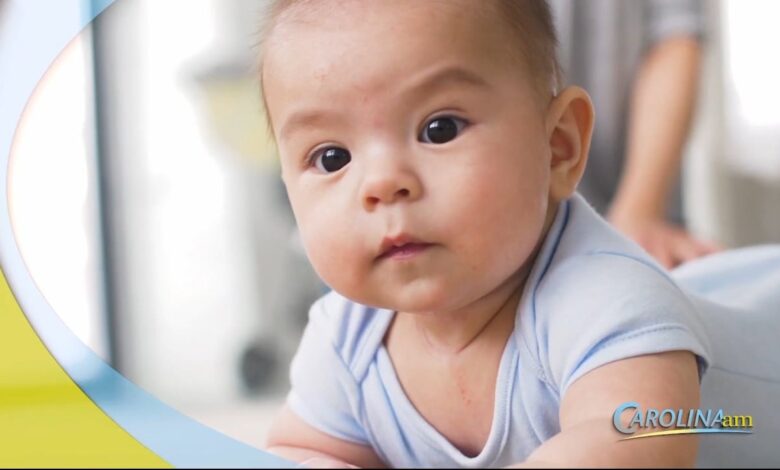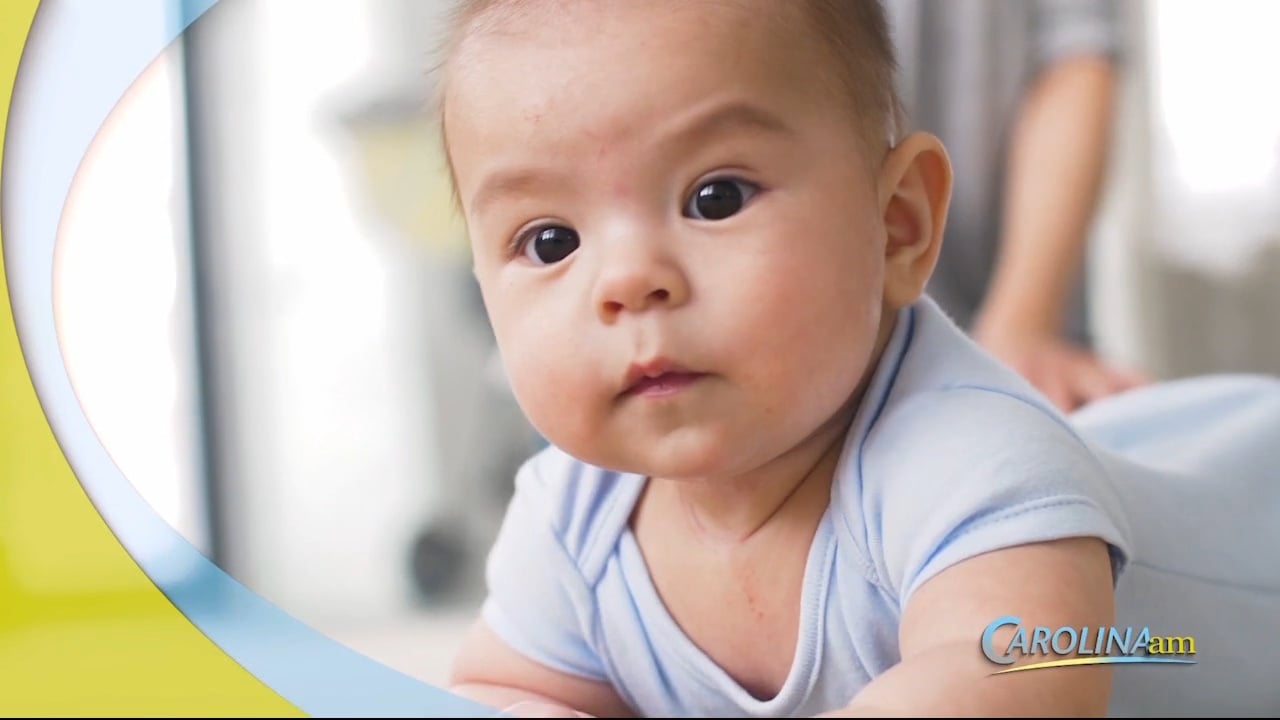
Baby talk is universal, a fascinating phenomenon observed across diverse cultures. This isn’t just about the cute, simplified words we use with infants; it’s a complex system deeply ingrained in our interactions with the youngest members of society. We’ll explore the characteristics of this form of communication, tracing its roots from evolutionary advantages to its profound impact on language acquisition.
The universality of baby talk suggests a deep-seated biological imperative, potentially wired into our brains. We’ll examine how different cultures employ this unique communication style, highlighting similarities and variations across languages and communities. This exploration delves into the nuances of how this seemingly simple form of communication fosters crucial social and emotional connections, ultimately shaping a child’s early development.
Defining Baby Talk
Baby talk, also known as infant-directed speech, is a distinct form of communication used by caregivers when interacting with infants and young children. It differs significantly from the way adults typically speak to each other, incorporating specific features to facilitate language acquisition and bonding. This approach fosters a positive and engaging environment for early language development.This unique communication style isn’t simply a matter of speaking slower or louder; it involves a carefully curated set of linguistic and non-linguistic cues.
Understanding these features helps illuminate the intricate ways we interact with and support the development of young children.
Characteristics of Baby Talk
Baby talk possesses several key characteristics that distinguish it from adult-directed speech. These include simplified vocabulary, high-pitched intonation, exaggerated pronunciation, and repetition of words and phrases. These characteristics are tailored to capture and maintain the attention of infants, making the learning process more effective and enjoyable.
- Simplified vocabulary: Baby talk typically uses basic words and short sentences. This focus on fundamental language elements helps infants grasp core concepts and build a foundation for more complex language structures later.
- High-pitched intonation: The tone of voice in baby talk is often higher and more varied than in adult-directed speech. This melodic quality can hold the infant’s attention and make communication more engaging.
- Exaggerated pronunciation: The way sounds are produced in baby talk often involves exaggerated articulation. This emphasis on clear pronunciation aids in the development of phonological awareness and helps infants identify the different sounds of their language.
- Repetition: Repetition of words and phrases is a common feature of baby talk. This repetition helps infants learn and reinforce new vocabulary and grammatical structures, fostering memorization and comprehension.
Alternative Terms for Baby Talk, Baby talk is universal
Various terms are used to describe baby talk, reflecting different perspectives on this communication style. The terms highlight the different functions and aims behind this distinctive mode of speech.
- Motherese: This term, often used interchangeably with baby talk, emphasizes the maternal aspect of this type of communication. However, it’s important to note that both parents and other caregivers utilize this approach.
- Infant-directed speech: This term is more comprehensive, acknowledging that the communication style extends beyond mothers to include all individuals interacting with infants.
- Child-directed speech: This broader term encompasses communication styles used with children across various developmental stages, acknowledging the adjustments in language and interaction throughout childhood.
Cross-Cultural Variations in Baby Talk
The use of baby talk isn’t uniform across cultures. The specific features and nuances can vary, highlighting the adaptability of this communication style.
| Culture | Characteristics | Examples |
|---|---|---|
| North American English | High-pitched intonation, simplified vocabulary, repetition of words and phrases. | “Mommy go bye-bye.” |
| Japanese | High-pitched intonation, emphasis on sound repetition, use of diminutives. | “Koko ni iru.” (Here I am) |
| Chinese (Mandarin) | Slowed speech, simplified grammar, use of reduplication (repeating syllables). | “Xiǎo hái.” (Little child) |
| Spanish | Slowed speech, high-pitched intonation, use of diminutives. | “Mi amorcito” (My little love) |
Universality Across Cultures
Baby talk, or infant-directed speech, isn’t a human invention; it’s a deeply ingrained part of our communication toolkit. Across the globe, cultures employ similar strategies to communicate with infants, suggesting a universal drive to facilitate early language acquisition. This instinct is rooted in evolutionary biology and is likely vital for bonding and developing a strong parent-child relationship.While the specific words and phrases may differ significantly, the underlying communicative patterns remain remarkably consistent.
This reflects a shared human need to adapt our communication to cater to the unique cognitive and developmental needs of infants. This universality provides compelling evidence for the innate nature of this linguistic phenomenon.
Variations in Baby Talk Characteristics
Cultural variations in baby talk often manifest in distinct intonation patterns, rhythmic structures, and vocabulary choices. These differences reflect the specific sounds and rhythms emphasized within each culture. For example, some cultures may favor higher pitch ranges in baby talk, while others may use a wider range of pitch contours.Variations in baby talk also extend to the specific words and phrases used.
These words and phrases may be culturally specific, reflecting the environment and social norms of the culture. These nuances often provide a window into the cultural values and priorities of a community. Examples might include specific animal names, food items, or everyday objects.
Frequency and Intensity of Baby Talk
The frequency and intensity of baby talk vary across cultures. Some cultures may engage in extended periods of baby talk, while others may adopt a more reserved approach. This difference could be linked to various factors, including cultural norms regarding child-rearing practices and the perceived importance of early language stimulation. For instance, cultures emphasizing early cognitive development might use baby talk more frequently than cultures with different child-rearing priorities.
Examples of Baby Talk Across Languages
Numerous examples of baby talk exist across diverse languages. The underlying pattern of simplification and repetition often holds true. In many languages, caregivers use a simplified vocabulary, short phrases, and exaggerated intonation to communicate with infants.
Presence of Baby Talk in Different Language Families
| Language Family | Presence of Baby Talk | Examples |
|---|---|---|
| Indo-European | Present | English “goo goo ga ga,” French “bébé,” German “schnuckelig” |
| Sino-Tibetan | Present | Chinese simplified words, emphasis on high-pitched tones |
| Niger-Congo | Present | Numerous West African languages exhibiting simplified structures and high-pitched intonations |
| Austronesian | Present | Languages in Southeast Asia with unique phonetic adaptations |
| Oto-Manguean | Present | Examples in Mesoamerican languages, often with specific sounds and intonations |
The table above highlights the presence of baby talk in a range of language families. It illustrates the universality of this communicative adaptation across diverse linguistic traditions. The presence of baby talk is not restricted to any specific language family; rather, it’s a pervasive human practice.
Evolutionary and Biological Basis
Baby talk, or infant-directed speech, isn’t just a cute quirk; it’s a deeply ingrained aspect of human communication, seemingly universal across cultures. Understanding its evolutionary and biological underpinnings sheds light on its crucial role in fostering early language development. This exploration delves into the advantages baby talk provides, the biological mechanisms behind it, and the innate predispositions that shape its use.The evolutionary advantages of baby talk are multifaceted.
By employing exaggerated intonation, simplified vocabulary, and repetitive phrases, caregivers create a distinct communicative style that draws the infant’s attention and facilitates early language acquisition. This structured approach helps infants distinguish speech sounds, recognize patterns, and potentially even learn language faster. Essentially, baby talk acts as a crucial bridge between the innate communication abilities of infants and the complex linguistic structures of their environment.
Evolutionary Advantages of Baby Talk
Baby talk’s evolutionary advantages stem from its effectiveness in stimulating and shaping early language development. Simplified syntax and vocabulary, combined with exaggerated intonation and prosody, capture the infant’s attention and create a more easily digestible linguistic environment. These elements help infants distinguish crucial speech sounds and recognize patterns, which are fundamental steps in language acquisition. The repetitive nature of baby talk can also aid in memory consolidation, allowing infants to internalize linguistic structures more readily.
This increased engagement with language promotes faster development and strengthens the crucial connection between the infant and caregiver.
Biological Basis of Baby Talk
The biological basis for baby talk lies in the interplay of innate predispositions and learned behaviors. The predisposition for caregivers to use baby talk likely evolved as a survival mechanism. Early language acquisition is crucial for survival, and baby talk may have been a tool for fostering that process. Biological mechanisms, including specific brain structures and neural pathways, facilitate the production and comprehension of baby talk.
The neurobiological mechanisms behind this phenomenon are not fully understood, but studies suggest a significant role for both the auditory and language processing regions of the brain.
Role of Innate Predispositions
Humans possess innate predispositions towards social interaction and communication. These predispositions may have evolved to ensure effective communication, particularly between caregivers and infants. These predispositions are likely reflected in the universal nature of baby talk, across different cultures and languages. The strong preference for infant-directed speech, despite the complexities of language learning, underscores the importance of early interaction in language development.
Further research is needed to determine the specific genetic and neural underpinnings of these predispositions.
Neurological Mechanisms
Neurological mechanisms play a crucial role in both the production and comprehension of baby talk. Areas of the brain associated with language processing, such as Broca’s and Wernicke’s areas, are activated during both speaking and listening to baby talk. Furthermore, areas involved in social cognition, such as the mirror neuron system, are also likely implicated. The engagement of these diverse neural pathways suggests that baby talk may be deeply embedded in the brain’s circuitry, linking social interaction with language acquisition.
It’s fascinating how universal baby talk is, isn’t it? That same, simplified, melodic way we speak to our little ones seems hardwired into our species. It’s almost like a subconscious, universal language. But did you know this same kind of innate communication, this primal need to connect, might also apply to something like insect phobe bug protein ?
Maybe there’s a deeper, shared human need to understand and even accept, strange or novel foods, as we do with the way we communicate with babies. The universal desire for understanding, regardless of the subject matter, continues to surprise me.
Summary Table
| Aspect | Description |
|---|---|
| Evolutionary Advantage | Enhanced language acquisition, increased attention, and faster learning. |
| Biological Basis | Combination of innate predispositions for social interaction and learned behaviors; activation of brain regions involved in language processing and social cognition. |
| Innate Predispositions | Strong preference for infant-directed speech, across cultures and languages, suggests a deep-seated evolutionary advantage. |
| Neurological Mechanisms | Activation of language processing areas (Broca’s and Wernicke’s) and social cognition areas; possible involvement of mirror neurons. |
Linguistic Features of Baby Talk
Baby talk, also known as infant-directed speech, is a distinct form of communication used by caregivers to interact with infants and young children. This unique style of speech is characterized by specific linguistic features that differ significantly from adult speech, and these features play a crucial role in fostering language development. Understanding these features allows us to appreciate the intricate ways caregivers support their children’s language acquisition.
It’s fascinating how universal baby talk is, isn’t it? That same instinct to simplify and use exaggerated tones seems to apply in other areas of medicine, like how immunotherapy works for melanoma. For example, how does immunotherapy work melanoma often involves a similar approach – boosting the body’s natural defenses to fight off the disease.
This whole idea of a simplified, heightened communication style, whether for babies or for complex medical treatments, really highlights the inherent patterns in human communication.
Simplified Grammar and Vocabulary
Baby talk employs simplified grammatical structures and a limited vocabulary, tailored to the developmental stage of the child. This simplification makes the language more comprehensible and engaging for the infant, fostering early language comprehension and encouraging communication attempts. It’s important to note that this simplification isn’t just about using simpler words, but about adjusting the entire structure of the language to align with the child’s developing cognitive abilities.
| Adult Language | Baby Talk Equivalent | Explanation |
|---|---|---|
| “The cat sat on the mat.” | “Cat sit mat.” | The complex sentence structure is reduced to a series of simple noun phrases. |
| “I want to eat.” | “Want eat.” | Auxiliary verbs and other grammatical markers are omitted, making the sentence structure more straightforward. |
| “Can you please pass me the book?” | “Book? Pass?” | Complex requests are broken down into smaller, more easily understood components. |
| “The big red ball is bouncing.” | “Big ball bounce.” | Adjectives and verbs are often highlighted, drawing the infant’s attention to specific aspects of the message. |
Prosody and Intonation
The way caregivers speak to babies is just as important as the words themselves. Prosody, or the rhythm and intonation of speech, is often exaggerated in baby talk. This includes using a higher pitch, a slower tempo, and more frequent pauses. These prosodic features capture the child’s attention, making the interaction more engaging and stimulating. The increased emphasis on vocal characteristics aids in the infant’s understanding of the emotional and communicative intent behind the words.
Repetition and Expansion
Repetition of words and phrases is a common feature of baby talk. Caregivers often repeat words and phrases multiple times, reinforcing the infant’s understanding of the vocabulary and grammar patterns. This repetition helps the child internalize the sounds and structures of language. Expansion, where the caregiver takes the infant’s simple utterance and expands on it, is another important aspect.
For example, if a child says “ball,” the caregiver might respond with “Big red ball.” This provides a more detailed and complex model of language.
Impact on Language Development
Baby talk plays a crucial role in fostering language development in young children. By using simplified language, exaggerated prosody, and repetition, caregivers create an environment that is conducive to language learning. The simplification of language makes it more accessible to children, while the repetition and expansion help them internalize the patterns and structures of language. This interaction style encourages children to communicate, fostering their language development.
Impact on Language Acquisition

Baby talk, a universally employed form of communication, plays a crucial role in a child’s early language development. It’s more than just a way to communicate with infants; it’s a carefully crafted system that significantly influences their comprehension and production of language. This nurturing style of communication acts as a stepping stone, gently guiding children toward more complex linguistic structures.The unique features of baby talk, including simplified vocabulary, exaggerated intonation, and repetitive phrases, create a supportive environment for language learning.
This simplified communication allows infants to focus on key linguistic elements, aiding their understanding and subsequent production of spoken language. This simplified communication acts as a crucial foundation for their journey into the world of language.
Impact on Comprehension
The simplified nature of baby talk allows infants to focus on essential linguistic elements, like word meaning and sentence structure. By using clear and concise vocabulary, and repetition, parents are effectively highlighting key words and phrases. The high pitch and exaggerated intonation, while not directly teaching specific words, help infants to recognize the patterns and rhythm of language, crucial for comprehension.
This early exposure to the rhythmic and melodic aspects of language lays a vital foundation for their ability to process and understand spoken language in the future.
Impact on Production
Baby talk significantly influences a child’s ability to produce language. The consistent repetition of words and phrases helps infants develop a strong sense of language patterns. This repetition aids in memory retention and the gradual understanding of language structures. As infants hear these patterns, they begin to mimic the sounds and intonations, gradually developing their own speech. The exaggerated intonation and emphasis on specific sounds in baby talk provide clear auditory cues, encouraging the development of speech sounds and patterns.
Evidence Supporting the Role of Baby Talk
Numerous studies have shown a correlation between the use of baby talk and faster language acquisition. Children exposed to baby talk often demonstrate a quicker understanding of language and a more advanced vocabulary compared to those who aren’t. The simplified vocabulary and clear pronunciation help children to grasp the meaning of words and sentences more readily. This increased exposure to language in a simplified format accelerates the language acquisition process.
Benefits and Drawbacks of Baby Talk
The use of baby talk presents both benefits and drawbacks. One significant benefit is the creation of a nurturing and supportive language environment. The simplified structure and repetitive nature of baby talk make it more accessible and engaging for infants. This early engagement with language fosters a positive attitude towards learning. A drawback is the potential for delayed language development if baby talk is used exclusively and does not transition into more complex language structures.
Children who exclusively hear baby talk may struggle with the transition to adult language. This requires a gradual shift from baby talk to more complex language, to avoid hindering the child’s ability to adapt to the nuances of adult speech.
Stages of Language Development Influenced by Baby Talk
| Stage | Description | Impact of Baby Talk |
|---|---|---|
| Pre-linguistic Stage (0-12 months) | Infants focus on sounds, intonation, and rhythm. | Baby talk provides consistent exposure to the sounds and rhythm of language. |
| Early Language Development (12-24 months) | Emergence of first words and simple phrases. | Repetitive phrases and simplified vocabulary in baby talk help infants learn to associate sounds with meaning. |
| Expanding Vocabulary (2-3 years) | Rapid expansion of vocabulary and sentence structure. | Baby talk creates a foundation for understanding more complex language structures. |
This table highlights how baby talk shapes different stages of language development. The simplified language of baby talk acts as a catalyst for each stage, fostering comprehension and production. The repetitive patterns within baby talk facilitate the learning of basic words and phrases. This ultimately leads to an understanding of language, which is fundamental to later development.
Communication and Social Interaction: Baby Talk Is Universal
Baby talk, or infant-directed speech, isn’t just about cute sounds and exaggerated tones; it’s a crucial tool for fostering communication and connection between caregivers and infants. This unique form of communication plays a significant role in shaping early social interactions and lays the foundation for future language development. The emotional and social benefits are profound, building a strong bond between parent and child, while also preparing the infant for a world of complex social interactions.
Facilitating Communication Between Caregivers and Infants
Baby talk employs various strategies to make communication more effective for infants. The simplified vocabulary, repetitive phrases, and high-pitched intonation help infants focus on key words and sounds, making the language easier to understand. The exaggerated expressions and gestures add visual cues, further aiding comprehension. These adjustments in speech patterns allow infants to actively participate in the interaction, building a sense of shared experience.
It’s fascinating how universal baby talk is, isn’t it? That same melodic, exaggerated speech seems to instinctively spring up across cultures. Maybe it’s a similar kind of instinct that makes asthma symptoms often flare up during the summer months. The increased pollen and other allergens, combined with higher temperatures and humidity, can create a perfect storm for those with asthma.
For more insight on why asthma can be worse during the summer, check out this informative article: why asthma can be worse during the summer. But back to the topic of baby talk, perhaps the universal appeal of this unique communication style reflects a deep-seated human need to nurture and connect.
The caregiver’s sensitivity to the infant’s cues, both verbal and nonverbal, further enhances this process, ensuring the interaction is tailored to the child’s needs and abilities.
Social and Emotional Benefits of Baby Talk
Baby talk fosters a positive and supportive social environment for infants. The warm and nurturing tone of voice associated with baby talk contributes significantly to the emotional well-being of the child. This creates a secure and loving atmosphere, crucial for emotional development. It helps establish a strong bond between the caregiver and child, providing a foundation for trust and affection.
This emotional connection, fostered by baby talk, is essential for the child’s future social interactions.
Examples of Baby Talk Promoting Bonding and Interaction
Numerous examples demonstrate how baby talk facilitates bonding and interaction. A parent using exaggerated facial expressions and a sing-song voice while narrating a simple action, like washing a toy, can engage the infant’s attention and encourage them to mimic the actions. Repeating simple phrases, like “bye-bye,” in a playful tone, reinforces the child’s understanding of the concept and encourages them to respond.
These interactions, rich in emotional cues and attention, promote a sense of closeness and understanding. The back-and-forth nature of baby talk encourages a dynamic exchange, where the caregiver responds to the child’s cues, reinforcing a feeling of mutual connection.
Role of Baby Talk in Developing Social Skills
Baby talk plays a critical role in the development of social skills in infants. By modeling social interactions through the use of baby talk, caregivers provide infants with a template for how to communicate and engage with others. The caregiver’s attention to the child’s cues, verbal and nonverbal, teaches the infant how to read social signals and respond appropriately.
This fosters empathy and understanding, preparing the infant for future social interactions and relationships. The interactive nature of baby talk helps develop crucial social skills, like turn-taking and sharing attention, essential for healthy social development.
Table Highlighting Social Contexts of Baby Talk
| Social Context | Description | Example |
|---|---|---|
| Parent-Child Interaction | Everyday interactions between a parent and child, such as playing, feeding, or changing a diaper. | Using exaggerated facial expressions and a playful tone while narrating a story to a child. |
| Grandparent-Grandchild Interaction | Interactions between grandparents and their grandchildren, typically characterized by a nurturing and affectionate tone. | Repeating simple words and phrases in a high-pitched voice while playing with a grandchild. |
| Caregiver-Child Interaction | Interactions between caregivers and children in childcare settings, such as preschools or daycare centers. | Using simplified language and repetitive phrases while teaching a child a new concept. |
| Teacher-Student Interaction | Interactions between teachers and students in educational settings, particularly during early childhood education. | Using baby talk or simplified language when introducing a new concept or skill to a young child. |
Possible Criticisms and Counterarguments
The universality of baby talk, while supported by substantial research, is not without potential criticisms. Different methodologies, cultural interpretations, and variations in language acquisition can all affect the perception and application of these vocalizations. Examining these potential criticisms and the counterarguments they generate is essential to understanding the nuances and complexities of this fascinating phenomenon.
Potential Criticisms of Universality
Several criticisms challenge the universality claim of baby talk. Some argue that the specific linguistic features observed in one culture might not be present or similarly employed in another. Furthermore, different cultures might have varying degrees of emphasis on certain forms of infant-directed speech, leading to discrepancies in the observed patterns. Researchers might also be prone to subjective interpretations of what constitutes baby talk, thus potentially introducing bias into their observations.
The lack of standardized criteria across diverse cultures could also lead to inaccurate comparisons.
Counterarguments Addressing Criticisms
Despite these potential criticisms, several counterarguments bolster the universality claim. Cross-cultural studies often reveal surprisingly similar patterns in infant-directed speech, demonstrating that despite variations in specific features, the fundamental functions remain consistent. For instance, a pattern of higher pitch, longer pauses, and exaggerated intonation is commonly found across many cultures, supporting the idea of a universal function in infant-directed speech.
Furthermore, researchers employ rigorous methodologies to minimize biases in their data collection and analysis. These methodologies include careful documentation of contextual factors, detailed linguistic analyses, and collaborations with local experts. These efforts ensure that the observed patterns are not merely superficial similarities, but reflect fundamental similarities in the communication strategies between parents and infants.
Alternative Perspectives on Baby Talk’s Role
Beyond the universal view, alternative perspectives highlight the importance of social and cultural factors. Some scholars emphasize the role of social interactions and cultural norms in shaping how caregivers communicate with infants. This perspective acknowledges the influence of particular cultural values and communication styles on the specific forms of baby talk used in different societies. These alternative perspectives don’t negate the universality of the
function* of baby talk but rather acknowledge the wide range of ways it can be expressed.
Nuances and Complexities Surrounding the Universality Claim
The claim of baby talk universality isn’t a simple yes or no. It’s a spectrum. Some features, like the higher pitch, may exhibit more consistency across cultures than others, such as specific vocabulary or intonation patterns. The nuances and complexities stem from the fact that while the
- function* of baby talk might be universal, the
- form* varies. Cultural values and communication styles influence the specific expressions and vocabulary used.
Table Summarizing Potential Criticisms and Counterarguments
| Potential Criticism | Counterargument |
|---|---|
| Variations in linguistic features across cultures may negate the universality claim. | Cross-cultural studies show surprising similarities in fundamental functions, despite variations in specific features. Common patterns like higher pitch and exaggerated intonation are frequently observed. |
| Different cultures may place varying emphasis on infant-directed speech. | While emphasis may differ, the core functions, such as facilitating communication and social interaction, remain consistent. Researchers use methodologies to control for this. |
| Subjective interpretations of baby talk could introduce bias into research. | Rigorous methodologies, detailed linguistic analyses, and collaboration with local experts minimize bias and ensure accurate comparisons. |
| Lack of standardized criteria across diverse cultures may lead to inaccurate comparisons. | Researchers employ specific criteria and methodologies to compare across cultures, minimizing the impact of inconsistent standards. |
Final Conclusion

In conclusion, baby talk, despite its simplicity, plays a vital role in early human interaction and language development. Its universality underscores a powerful, innate human tendency to adapt communication to the needs of young children. We’ve seen how this seemingly instinctive practice fosters crucial social bonds and influences the very foundations of language acquisition. Further research can undoubtedly reveal more insights into this captivating and essential aspect of human connection.





